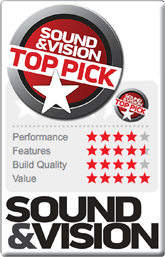Video Players
The "player" of your movie will likely be a computer, dvd player, Blu-ray, or a video game console. Video can come from phones to blue ray players these days and now you don't even need players in some instances, see below. If you are going the more conventional route, the "video-out" of your movie source connects to the "video-in" of your projector and you now have a picture. In fact, if you can connect it to a TV, then you can connect it to a projector!
For those with Apple TV, Amazon Fire, Google Chromecast, and other HDMI plug-in players, just plug your network device directly into the HDMI port of your projector. Your projector is basically a television, so if you can connect to a television, then you can connect to a projector!
Features to consider:
Video-Out Connections: What connections are available to go out to your projector? Most video players offer multiple connections both in and out. Understand the difference between composite, s-video, and component video signals. Component or HDMI are the current top-of-the-line cabling options for
a high definition video signal, but the other connections can come in handy when needed. We always take advantage of versatility when offered.
Audio-out Connections: Audio is generally carried by RCA cables or newer fiber-optic cabling. Either will provide surround-sound; the difference is whether the signal is carried in analog or digital format.



